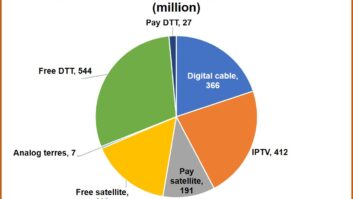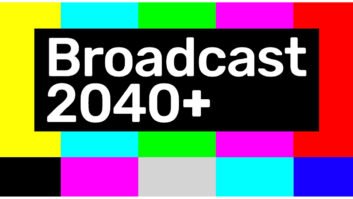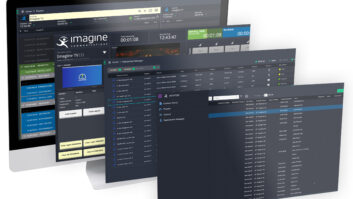
Fifteen years ago, changes in TV were largely driven by broadcasters. They told people what they wanted, and they wanted it. Today consumers are firmly in the driving seat. They pick up new devices, demand new content and watch what they want, when they want – and broadcasters must deliver.
So, when we look forward 15 years from now, the question isn’t whether TV will change – that’s a given – but by how much, and how will the broadcasting industry keep pace?
There are already clues to suggest what developments are on the horizon for the industry. By putting these together we’re able to form a pretty interesting picture of what’s in store for the long-term future of television.
Immersive viewing experiences
Immersive experiences are increasingly popular among audiences that want to be as close to the content they’re consuming as possible – the growing number of people attending Secret Cinema showings and immersive theatre productions proves this.
By 2030, we’ll have gone one step further. Immersive TV experiences will be part of our regular TV line-up. Viewers will be able to attend live TV shows in person, where audiences will have an active role in the episode they’re watching.
And if you can’t make it to an immersive show, there will always be gamified TV to engross yourself in. Role-playing games (RPGs) will have transformed into RPTV where viewers can influence how TV content plays out by making in-episode decisions that control and change the storyline as they wish. Filming multiple scenarios and endings will be the norm for producers who will pride themselves on delivering shows that ensure every episode their audience engages with ends up personal to them.
Birth of ‘Beacon TV’
Since Beacon technology was introduced in 2013, it has proved to be an invaluable way for brands to connect and sell their goods to consumers in unique, personalised ways. But what about broadcasters? If beacons can drive sales, why not viewers too?
By 2030, ‘Beacon TV’ will just be another way for viewers to consume video on-the-go, with personalised viewing experiences delivered to individuals via public devices. Blank advertising spaces on the high street will play tailored-to-you TV ads as you walk past particular stores, changing room mirrors will play embedded videos suggesting complimentary outfits and Underground posters will stream commercials for events taking place local to the tube stop you’re at.
Device deluge
Forget the second screen, by 2030 the amount of devices that will be receiving broadcast content will be innumerable. Google’s Glass project may have proved too much too soon, but the concept is an intriguing one: the ability to watch content wherever you are, while doing something else. Give today’s multi-screeners 15 years and there’s no doubt they’ll have fully embraced the idea.
This opens up the opportunity for far more outrageous ‘devices’ to add to the sprawl of smart tech already available. For example, internet-connected contact lenses with embedded microscopic screens, or TV beamed into your brain via direct brain-to-computer interfaces.
Following the recent commercial launch of Oculus Rift, and with HTC Vive and PlayStation VR just around the corner, virtual reality will also be a big player in the TV industry by 2030.
The strength of linear TV has always been the social aspect, and VR will be able to replicate this shared experience in a unique way. Personalised virtual viewing lounges where friends and family can gather to watch content together, no matter where they are in the world, will replace the living room. Stepping into your favourite TV shows or movies will also be a possibility, opening up an entirely new viewing dimension.
Money-making moods
Monetisation of content is important no matter what year it is, but as the TV landscape expands across devices, platforms and whatever new technologies there are still to come, content owners must smarten their approach to driving revenue.
Already consumers are wising up to the ways they can avoid video advertising. Take the rising use of ad-blockers as proof and by 2030 any publisher that hasn’t found the right solution won’t be around to tell the tale.
Dynamic ad insertion will be the industry’s saving grace, but not in the form we know it today. Serving ads based simply on data about what viewers are watching or where and who they are isn’t going to be enough for tomorrow’s hyper-connected audiences.
Instead, by 2030, broadcasters will have mastered the art of utilising ‘Bigger Data’, serving ads based on a viewer’s current mood (yes, ads that will actually cheer you up) or who they’re watching with. We’ll be serving ads relevant to whole families or friendship groups, based on the conversations they’re having or the shared experiences they’ve had.
While predicting the end of bad ads would be wishful thinking, hyper-personalised advertising content that compliments and improves viewing experiences will be the norm: a win-win for consumers and content owners alike.
Uncertainty is certain
By 2030 we’ll have seen current players fall, been surprised by new disruptors, caught off-guard by new trends and embraced a whole host of new technologies, all of which will have reshaped the industry as we know it today.
Whilst we cannot be sure of how TV will look in 2030, we do know that significant change lies ahead.
By Sophie Rayers, director of marketing, EMEA and LATAM at Brightcove







